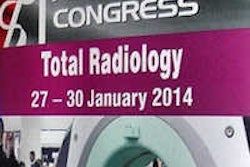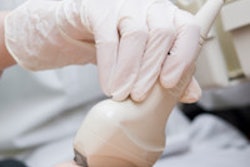NEW YORK CITY - Sonographers may think of themselves as midlevel clinical practitioners. But to many, they're just ultrasound techs -- with their sophisticated skills underappreciated, undervalued, and underpaid.
This was the wake-up call delivered by three ultrasound department administrators and clinical instructors with more than 75 years of collective experience to sonographers attending this week's American Institute of Ultrasound in Medicine (AIUM) annual meeting. Nonphysician sonographers are paid at inadequate compensation levels throughout the U.S., compared with other nonphysician medical professionals -- including imaging professionals -- who perform equal or fewer duties and receive greater benefits.
From the earliest clinical use of ultrasound, the worth of sonographers' services, the knowledge and expertise required to acquire images, and the skills needed to do so have not always been acknowledged, according to the presenters in the Tuesday morning session. This is ironic because image acquisition using ultrasound equipment is dependent upon the operator and relies more than any other type of diagnostic imaging acquisition procedure upon individual competence.
During the past 20 years, nothing has really changed, the presenters said. In fact, the situation may have worsened. Sonography is splintering into subdisciplines, and entry-level requirements remain low.
So what should medical sonographers do? Unify to mandate higher entry-level educational requirements. Get certified for every type of ultrasound exam they perform. Verbalize and lobby administrative managers who set pay grades and wages of the value medical sonographers provide.
"It's a plague upon on our profession that people who perform imaging are not certified," said James Pennington, lead perinatal sonographer and clinical instructor at the University of Nevada School of Medicine in Las Vegas. "What's even worse is that any high school graduate who completes an 18-month course in ultrasound imaging at a commercial for-profit trade school can get a job to perform diagnostic ultrasound exams."
He added, "These for-profit schools are diluting our field with people who are less than qualified. Furthermore, graduates of these schools -- and others -- may have no desire to expand their horizons. Our specialty is filled with people who like to go to their job, punch a clock, do scans, mindlessly go through the day, and go home."
Increase education requirements
Salvatore LaRusso, chief sonographer at Hershey Medical Center in Hershey, PA, said that it is imperative for sonographers to become involved in their specialty's professional organizations -- the AIUM and the Society of Diagnostic Medical Sonographers (SDMS) in particular -- to work to increase certification requirements.
He pointed out that radiologic technologists have finally succeeded in raising minimum educational requirements. Starting in 2014, radiologic technologists must have a minimum of a two-year associate degree from an accredited college.
"We don't even have that," LaRusso said. "How can we demand better salaries with such low educational requirements? Financial compensation goes hand in hand with education. The difference between [being considered] a midlevel medical practitioner boils down to education. Most midlevel practitioner medical specialties require a master's degree at entry level. I'm not knocking on-the-job training. But our entry-level requirements need to be set at a much higher level."
And that includes certification. LaRusso said that it took a year to convince human resource managers at Hershey Medical Center to classify ultrasonography professionals as sonographers. The hospital now requires that all newly hired sonographers who have not passed their accreditation boards take them within six months. Those who do not pass are given an additional grace period of six months to do so. If they have not succeeded within a year, they are fired.
Pay scales: A circular conundrum
Robert De Jong, radiology technology manager of the ultrasound department at Johns Hopkins Hospital in Baltimore, discussed past and current histories of pay discrepancies, and the very real barriers that exist to obtaining a forklift upgrade pay increase for sonographers.
"Historically, we have not able to get the salary we deserve," De Jong said. "In the early days of the profession, most general sonographers and obstetric sonographers were RTs [radiologic technologists] in radiology departments. Vascular sonographers came from nursing. Our salaries were slightly higher than general RTs, but from the perspective of radiology department administrators, they needed to be similar. Over time, MRI and nuclear medicine technologists' pay scales leapfrogged over us. CT techs also now make more."
Data from the U.S. Bureau of Labor Statistics (BLS) show that the average salary for a medical sonographer in the U.S. is $66,000. Nuclear medicine technologists average $71,000, followed by MRI technologists at $67,000, and CT technologists at $65,000. General RTs earn $55,000. Technologists specializing in CT, MRI, and nuclear medicine tend to be men, compared with sonography, a female-predominant imaging specialty.
Sonography compensation also varies by specialty. Sonographers specializing in obstetrics and vascular imaging tend to be paid a higher hourly wage than general sonographers, De Jong said.
At Johns Hopkins, obstetrics sonographers work Monday through Friday with a workday from 7:30 a.m. to 6 p.m. and are one pay grade higher than De Jong's radiology sonographers, who make less but work a shift on a 24/7 basis. While vascular sonographers have the same pay grade as the radiology sonographers, they also receive higher compensation because they are classified as university employees rather than hospital employees and come under a different pay scale.
Vascular sonographers also have much greater responsibility. The vascular surgeons to whom they report do not interpret ultrasound images. They expect the sonographers to interpret the images and write the reports. Vascular sonographers also have the autonomy to call referring physicians with the findings. This is not the case in the Hopkins radiology department where radiologists interpret the ultrasound exams, De Jong said.
When discussing these pay discrepancies with his hospital's human resource department, De Jong asked how pay rates were set. He was told that statistics from third-party organizations and government agencies were used.
"Where do SDMS and BLS get their data? From us," De Jong said. "We tell them what we are paid. Hospitals use this data, and feel that they are paying what is fair and competitive. We are in the middle of a catch 22. If everything is based on our salaries, how can we make them better? We are stuck in the middle with no ray of sunshine to get the salaries we deserve for our skills and knowledge."
De Jong said that he'd convinced the human resources department to approve a 5% salary increase for his team, presuming that they were registered in their specialties. To his consternation, he discovered that 75% were only registered in general ultrasound. "There went the raise," he said.
De Jong also pointed out that like many other clinical support staff, sonographers jobs and salaries were at the mercy of the economy. "You can get more money when there is a shortage of sonographers," he said. "When there isn't, you might not even be able to get a job."
Pennington emphasized the point that experienced medical sonographers are far more skilled in performing ultrasound exams than the vast majority of radiologists who interpret them in the U.S. This competency may be acknowledged by radiologists, but that it hasn't created change, he said.
He wryly commented on a lecture he'd recently attended in which a radiologist commented that the highest paid sonographer in his practice earned $80,000 a year plus benefits. Then he said, without any hesitation that he netted $1.5 million annually from his ultrasound practice.
"What's wrong with this equation?" Pennington asked. He noted that the number of attendees at the 7:00 a.m. session had increased 15- to 20-fold from a comparable session the year before.
"More of you are obviously are concerned," he concluded. "You need to demand more. There needs to be a collective focused effort for ultrasound professionals and the societies that represent them to let each other know where you stand -- and then do something about it. You may not see any rewards during your career, but it's important for our profession to work to make changes."



















